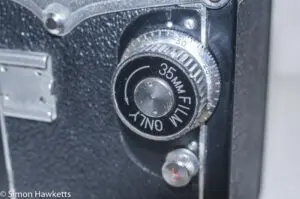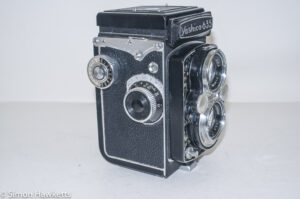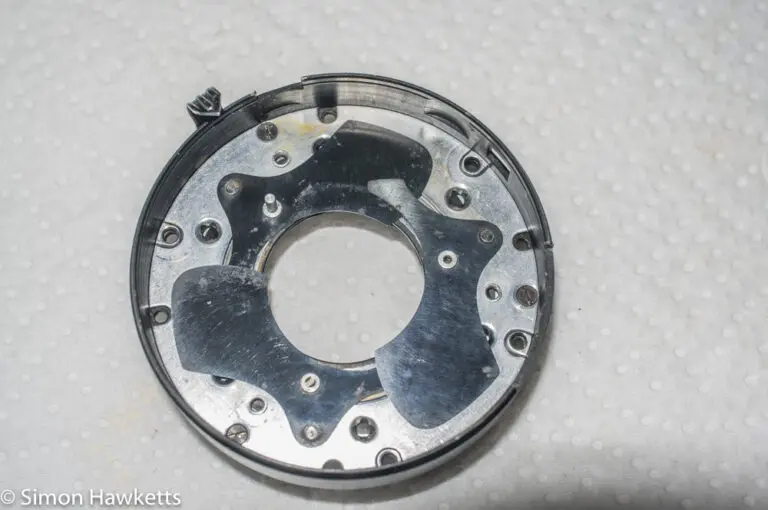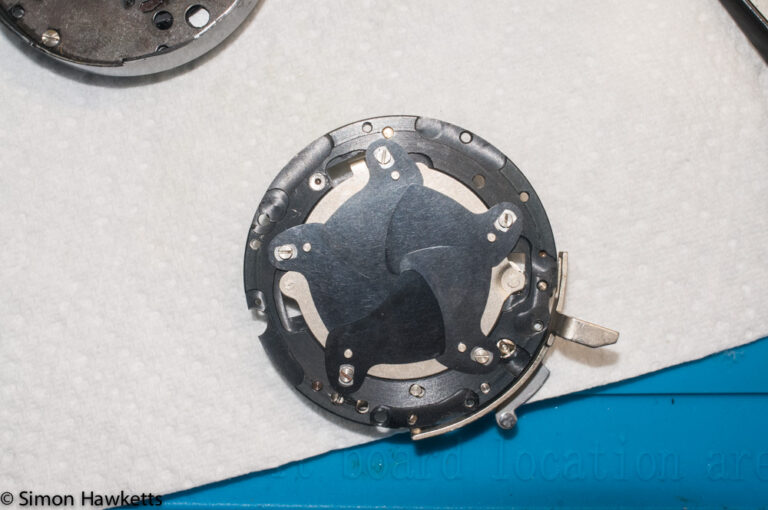Yashica 635 TLR camera
The Yashica 635 TLR camera is a medium format camera with a bit of a novel twist – it can also shoot 35 mm film when fitted with an adaptor.
Yashica 635 TLR Images
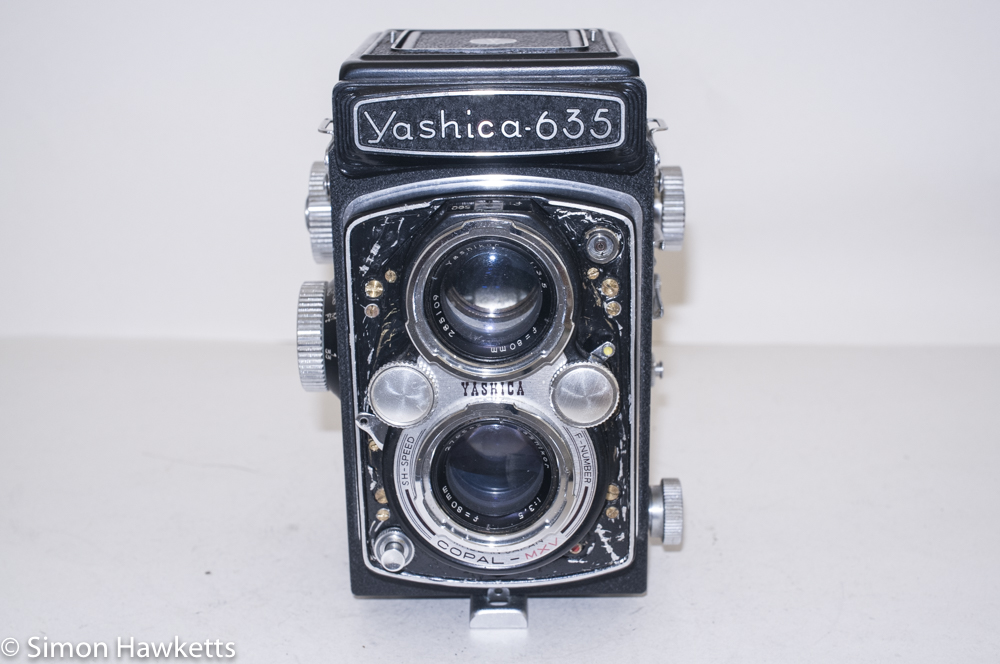
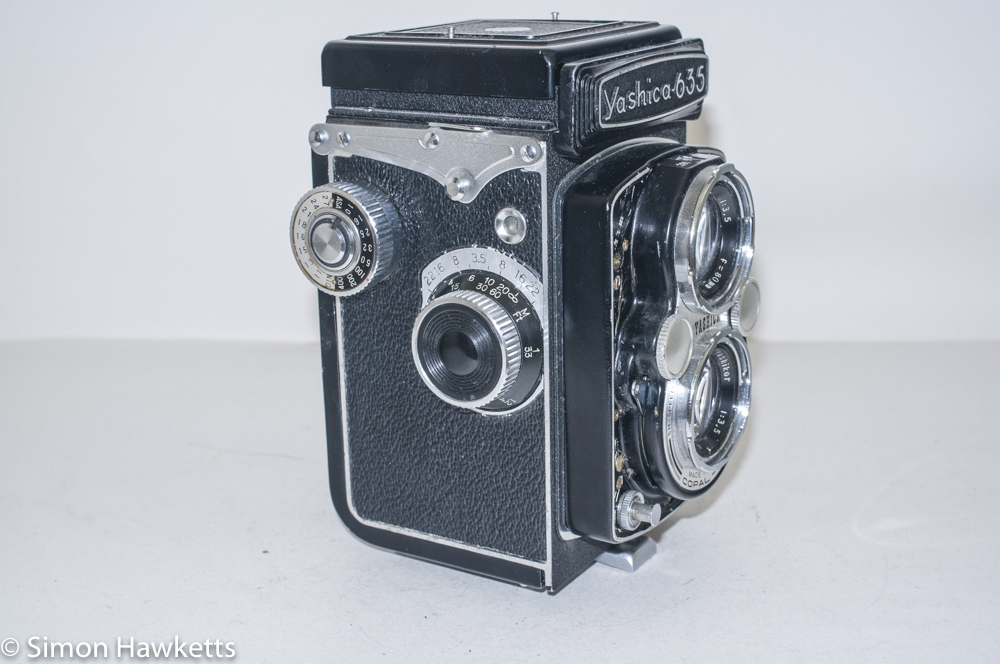
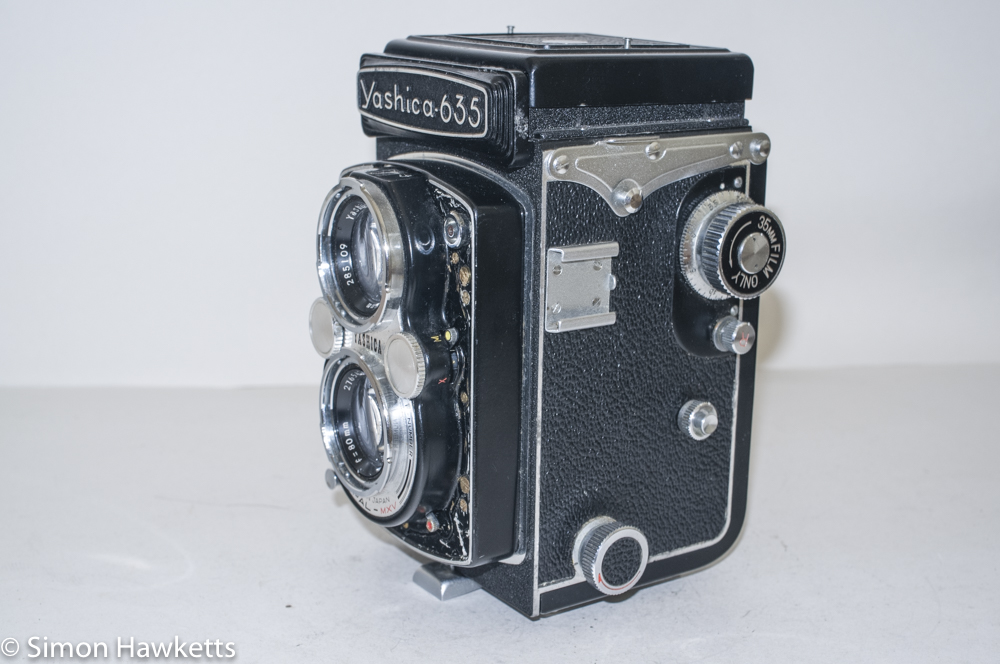
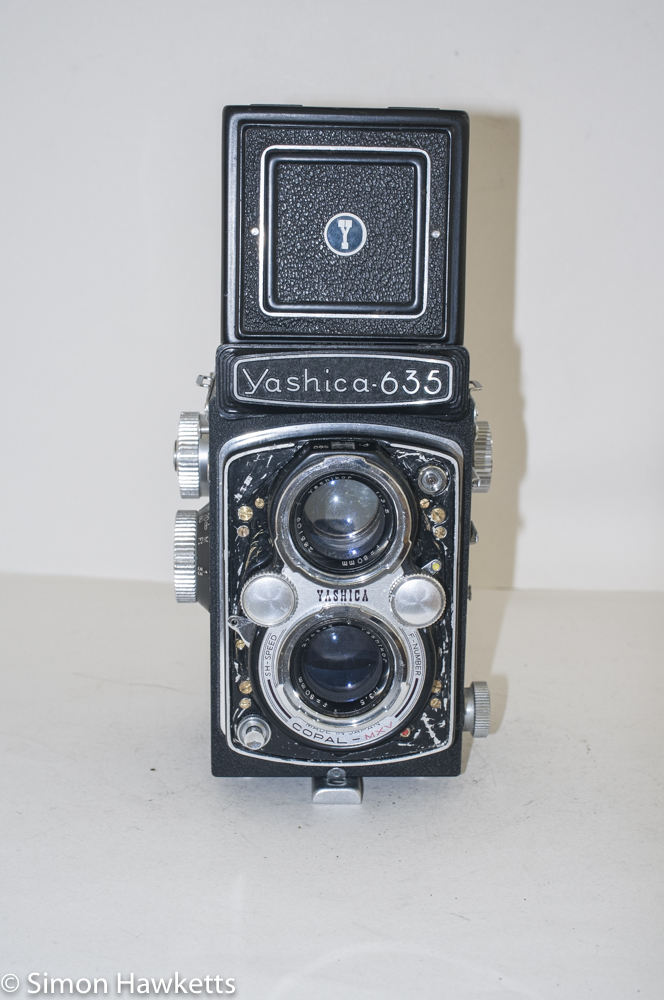
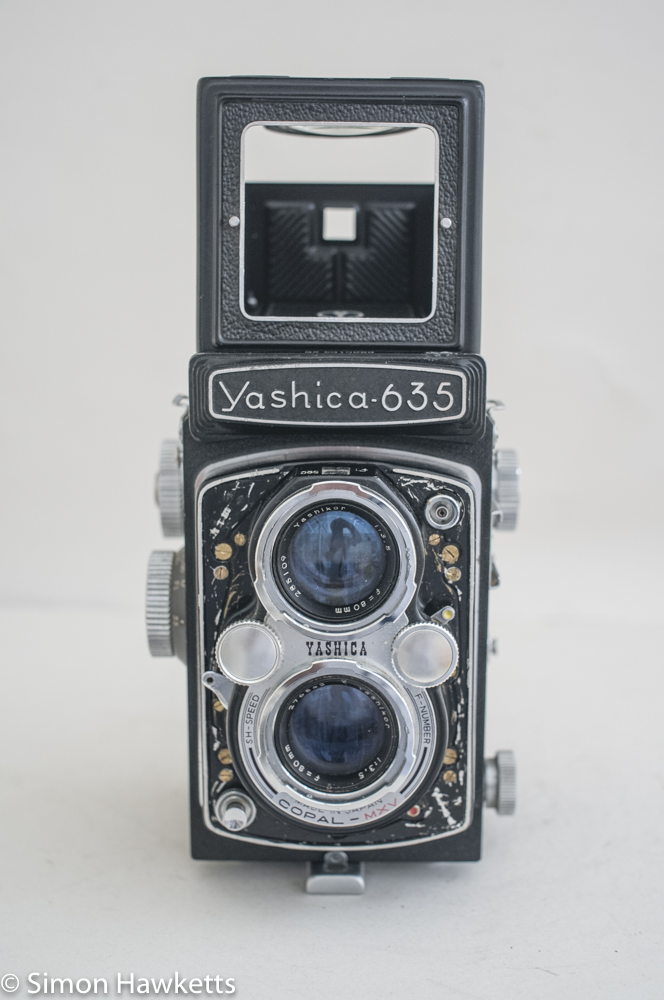
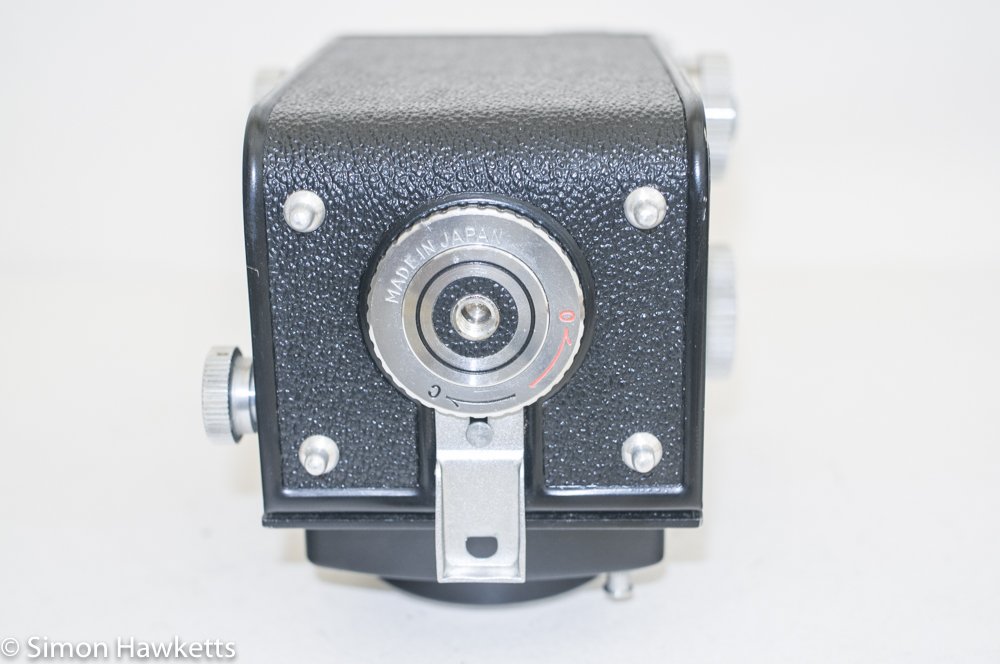
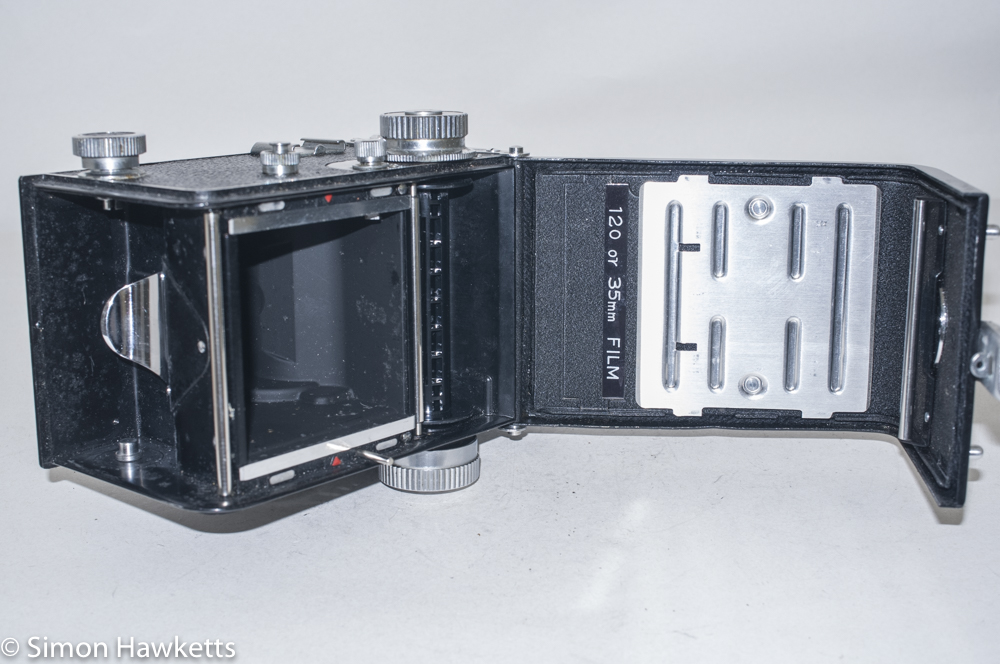
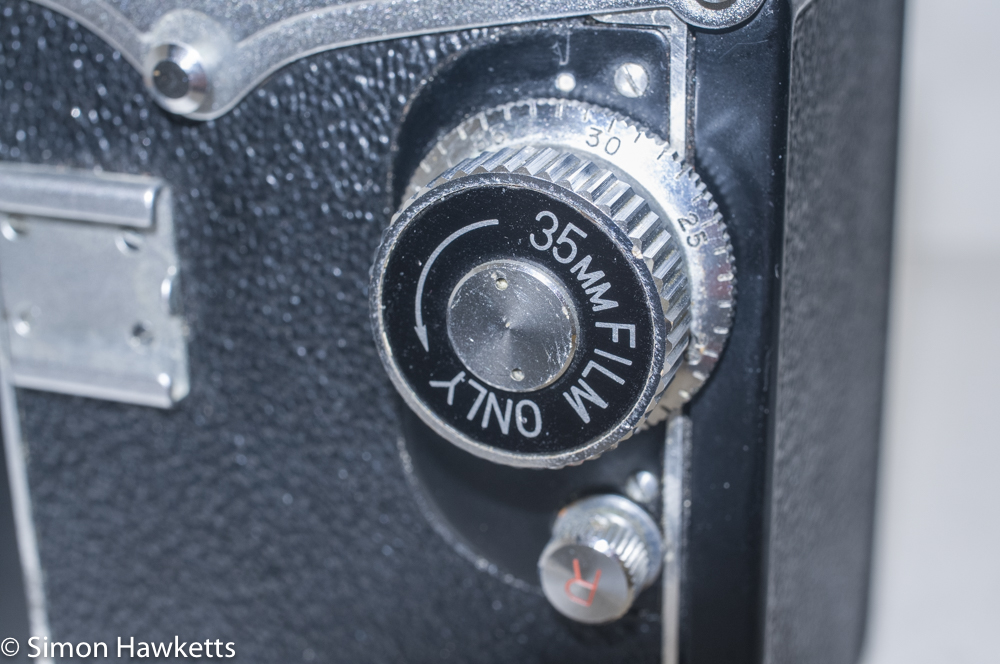
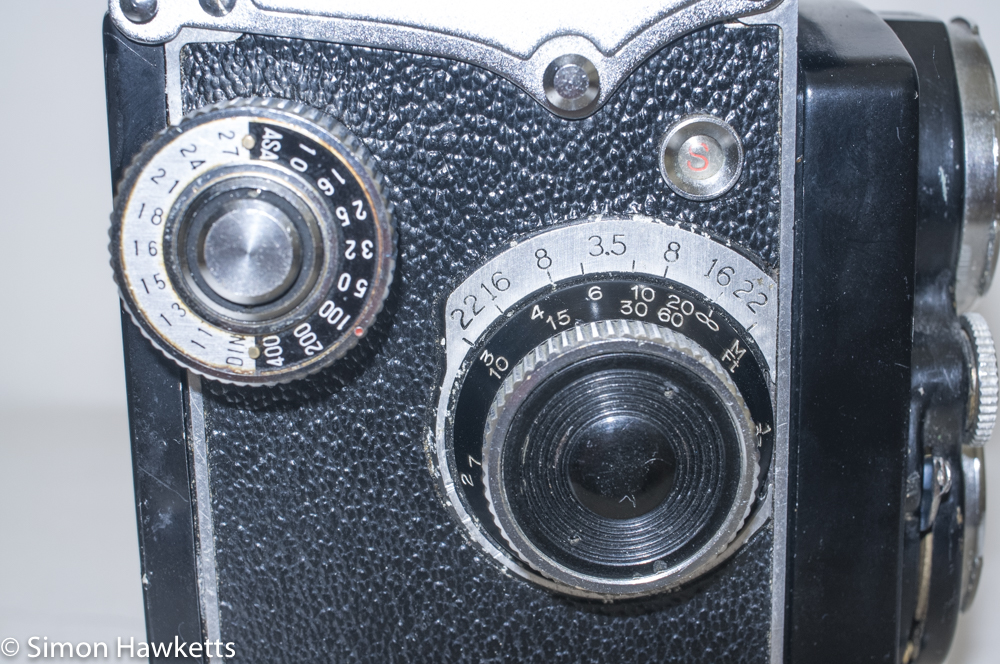
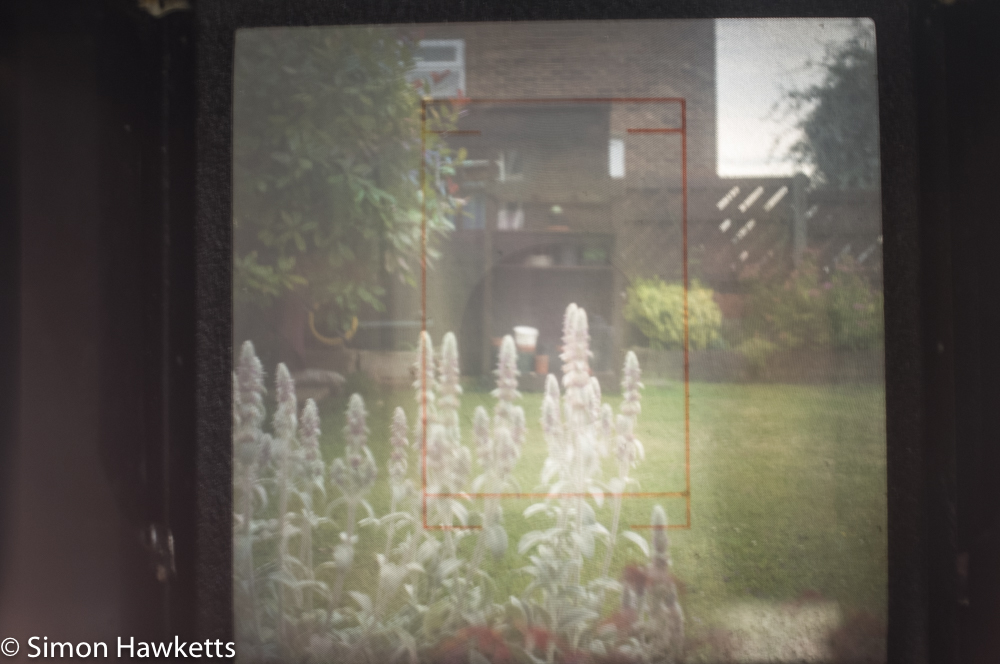
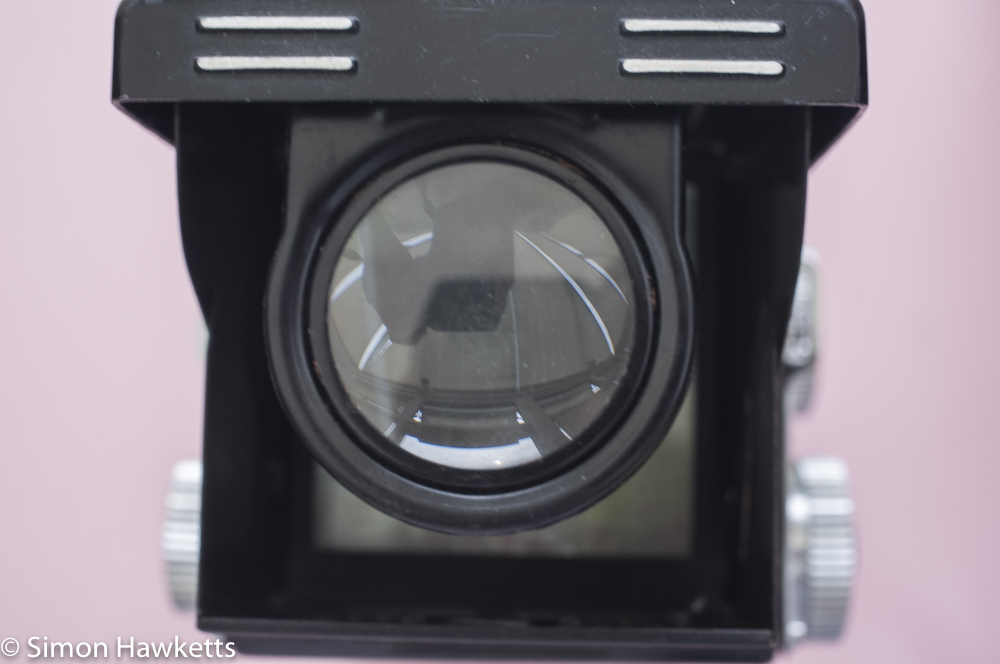
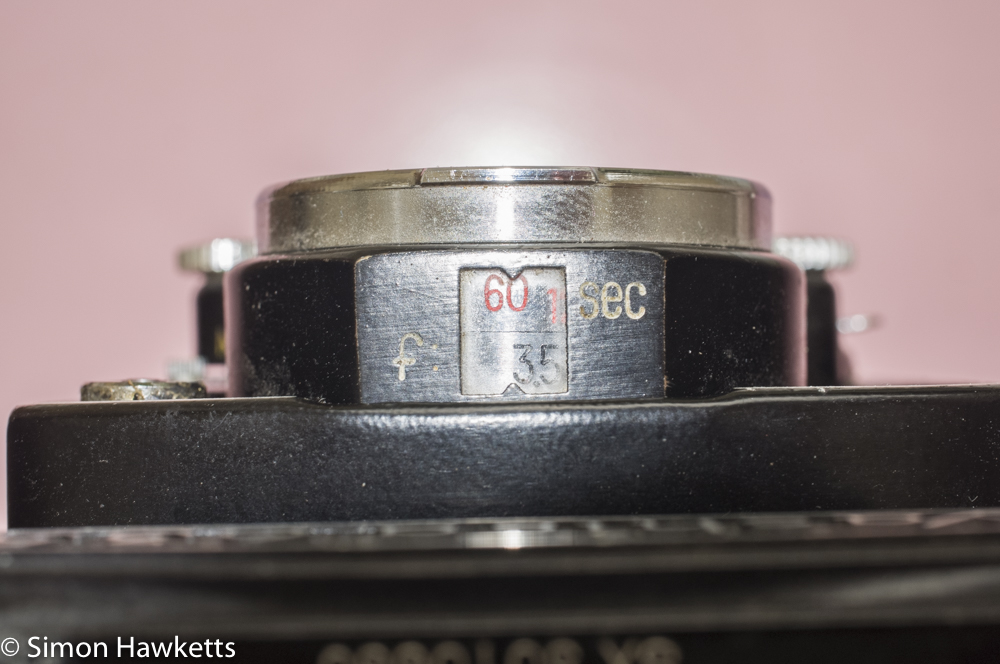
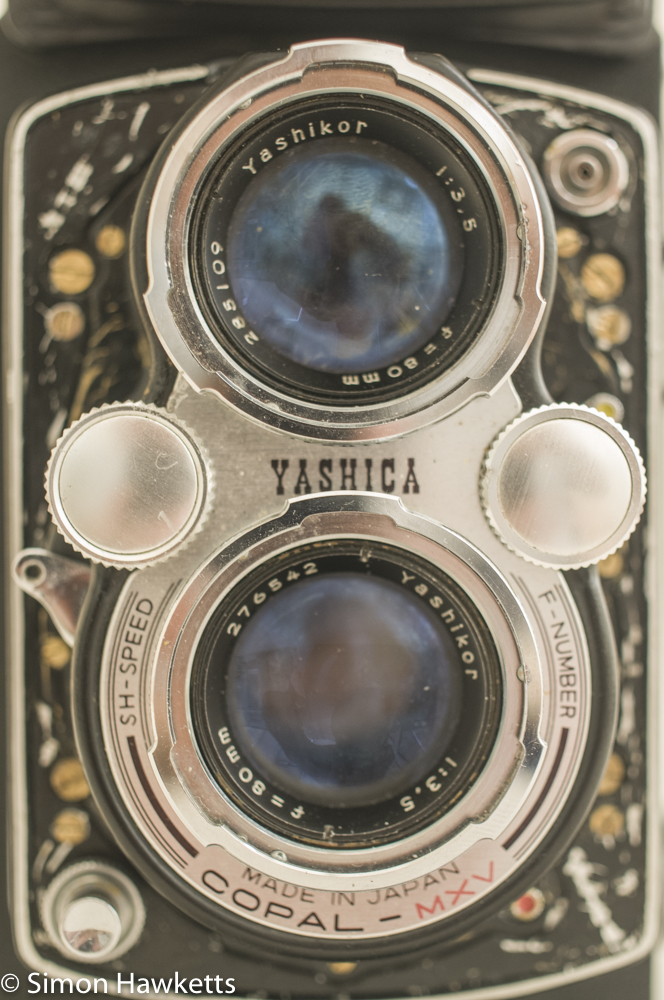
My Yashica 635 TLR camera
As I said in an earlier post, I bought this camera from eBay after I’d been offered a similar unit but at a price I couldn’t justify.
It was sold as not working, but it was a relatively simple job to fix the problem (a sticky shutter) and in all other aspects the camera seems fine. One consequence of the small repair I had to do is that the front covering had to be removed, and it disintegrated on removal – that is why the pictures of the camera show the front panel fixing screws.
The cosmetic condition of the camera is really very good. There is a small patch of corrosion on the top of the name plate near the serial number and some also on the viewfinder hood, but considering the age of the camera that isn’t too bad.
The viewfinder itself is a bit dull, but that is pretty much standard on old TLRs. I’ve cleaned the viewing screen (which had a deep layer of muck on it) but I suspect the mirror needs to be cleaned, which is a more risky operation. I’m going to try a film through the camera first and see how the viewfinder performs in real use before I decide if that needs to happen.
Mechanically, now the shutter is working, everything seems fine with the camera.
The aperture blades don’t stick in any way and both lenses are free from any fungus or dirt. All in all it’s a nice example.
Yashica 635 TLR Description
For anyone not familiar with the concept of a TLR, or twin lens reflex, the camera consists essentially of two parts – a viewfinder at the top and a film exposure part at the bottom. Both the lenses fitted are the same focal length and both have the same maximum aperture, but the top lens is used to project an image on to a viewfinder screen via a mirror and the bottom lens projects an image onto the film via the shutter.
Because the distance to the viewfinder and the distance to the film is the same, and because the two lenses are both moved together, it’s possible to focus the image taken on the film using the viewfinder.
For taking pictures, the bottom lens has a shutter and aperture which are missing from the viewing lens, so the photographer always get the maximum picture brightness, and that leads to one of the disadvantages of the TLR – it isn’t possible to view the real depth of field because the viewing lens can’t be stopped down. The other big disadvantage is that the two lenses are in different vertical positions; that doesn’t matter too much for normal landscape or portrait shots, but it makes a TLR difficult to use for close up or macro work.
Now to the specifics of the Yashica 635 model.
The Yashica 635 is one of a long series of twin lens reflex cameras that Yashica made. Although not as famous as the Rollei models, they were very dependable and reliable cameras which many photographers moved up to from a simple viewfinder or folding camera. Being a medium format camera means the negative size is large and therefore TLRs of this style are capable of giving really good results.
In design, it is very similar to the Yashica D model, with the added feature of being able to shoot 35 mm film as well as the medium format 120 film the model D was designed for. Unfortunately, I don’t have the add-on kit needed to use the camera with 35 mm film – I’ll need to keep my eyes peeled on eBay to see if I can pick one up.
When shooting 35 mm film the add-on kit consists of a set of extenders to fit into the 35 mm cartridge, so it fits in the film supply spool, and a slot in the film gate which reduces the width down to allow the 35 mm film to be correctly held. There is also an add-in part for the sports finder to allow pictures to be correctly composed with the 35 mm film fitted.
Although I don’t have them, I suspect these parts were included with the camera when new since some parts of the conversion to 35 mm are built into the camera body. For example, the 35 mm film wind knob and the rewind knob are fitted, and the viewfinder screen has the image lines for 35 mm film engraved on it.
Of course, when shooting 35 mm film the smaller negative size would mean that the lens would act as a portrait length, short telephoto lens and this was probably the main use for the camera when fitted with this film – in fact the negative produced with 35 mm film is in portrait orientation.
In 35 mm mode there is a completely separate film advance system fitted on the opposite side of the camera to the medium format winder. This film advance has a mechanical frame counter fitted around the outside of the control which needs to be reset by hand when the film is loaded and is fitted with a mechanical lock which means it can only advance one frame at a time and then needs to be unlocked before the film can be advanced again. A small button under the 35 mm film advance performs this unlock action.
When the camera is used with 120 medium format film the film advance is very similar to the 35 mm system, but works with different controls. Again, the film advance will lock when the frame is correctly advanced and needs to be unlocked with a button in the middle of the advance before it can be advanced again. With medium format film, there is a frame number counter dial which automatically resets when the back of the camera is opened, which is much more sophisticated than simpler cameras which rely on the numbers on the back of the film backing paper and will also result in more accurate negative spacing.
With respect to the exposure system, the 635 is nicer to use than many TLR’s because the aperture and shutter speed can be set and viewed whilst looking down into the camera viewfinder. There is a window in the top of the viewing lens which displays both settings, and there are small thumb wheels on the front of the lens housing which allow them to be set. This means the whole exposure can be set whilst viewing the scene assuming the waist level finder is used.
The shutter is not cocked when the film is advanced with either format film, so there is a cocking lever on the lens just above the shutter release button. The handbook suggests that the speed should only be set before the shutter is cocked, although I’m not sure any real damage would be done if this rule isn’t strictly adhered to.
The Yashica series of TLR cameras have a reputation for being very good quality cameras with sharp and contrasty lenses. At the moment I have a roll of Extar 100 colour negative film fitted to my camera, and I’ll publish the pictures from it once they are developed. We can then make our own minds up about that!
Yashica 635 TLR Specifications
- Yashica 635 dual format twin lens reflex camera
- Can shoot 120 medium format & 35mm with adapter kit
- Yashikor 80mm f/3.5 taking and viewing lens
- Copal MXV shutter 1 sec to 1/500 sec + B
- Thumb wheels for aperture + shutter adjustment
- Aperture + Shutter visible in top of camera
- Flash sync at all speeds
- Flash synced for X & M
- Manual shutter cocking
- Frame counter with auto reset for medium format film
- Hand settable frame counter for 35mm film
- Self timer
- Film speed reminder
- Bright waist level viewfinder
- Shutter release threaded for cable release.
- Sports finder
- Flash socket
- Tripod thread in back cover lock.
- Manual available on line here
Discover more from Everything Vintage
Subscribe to get the latest posts sent to your email.


